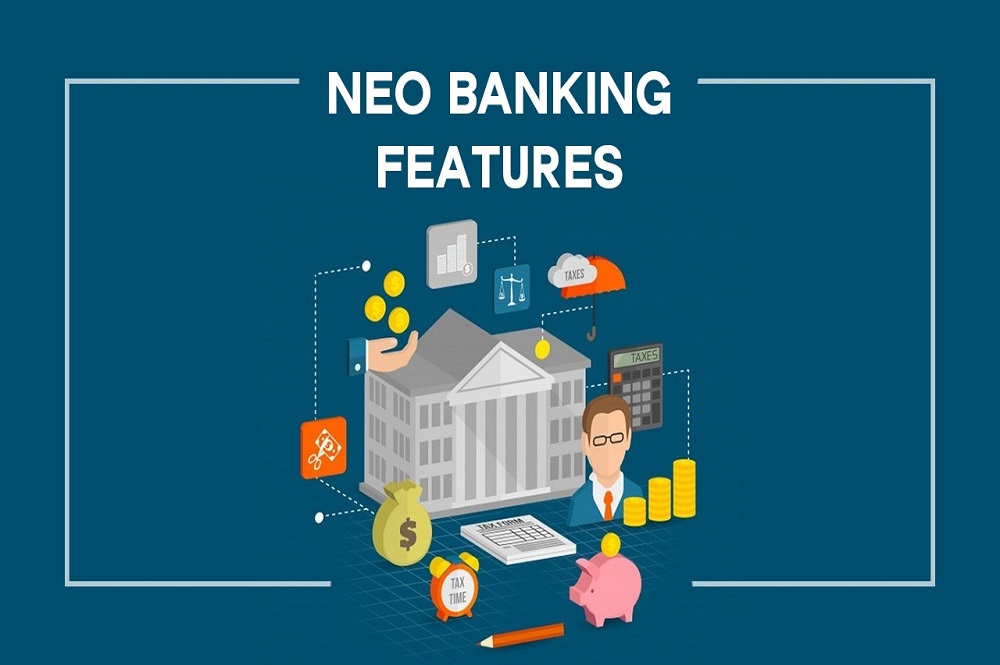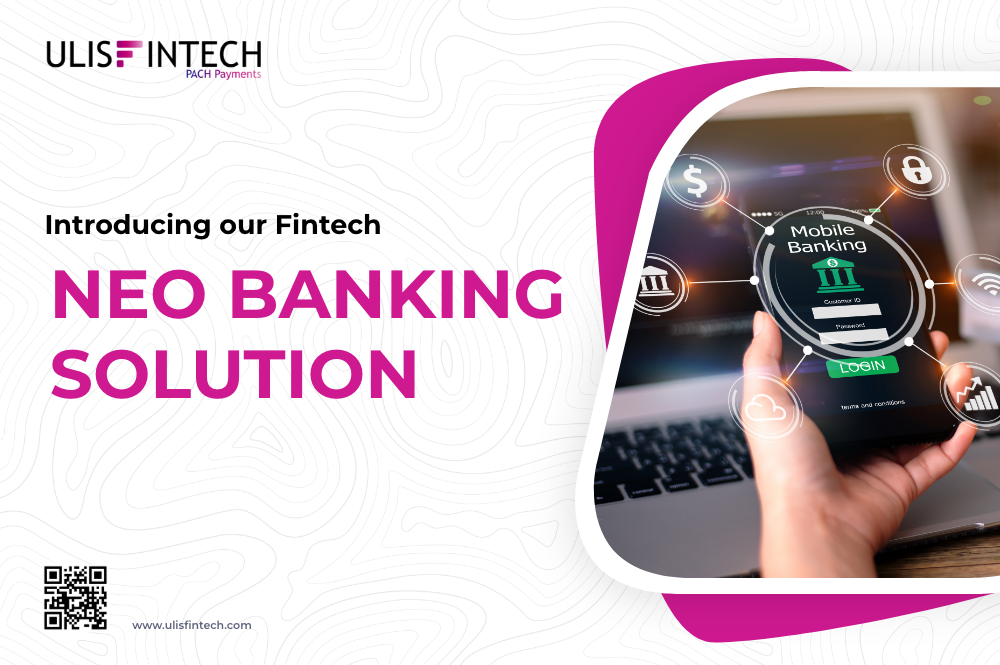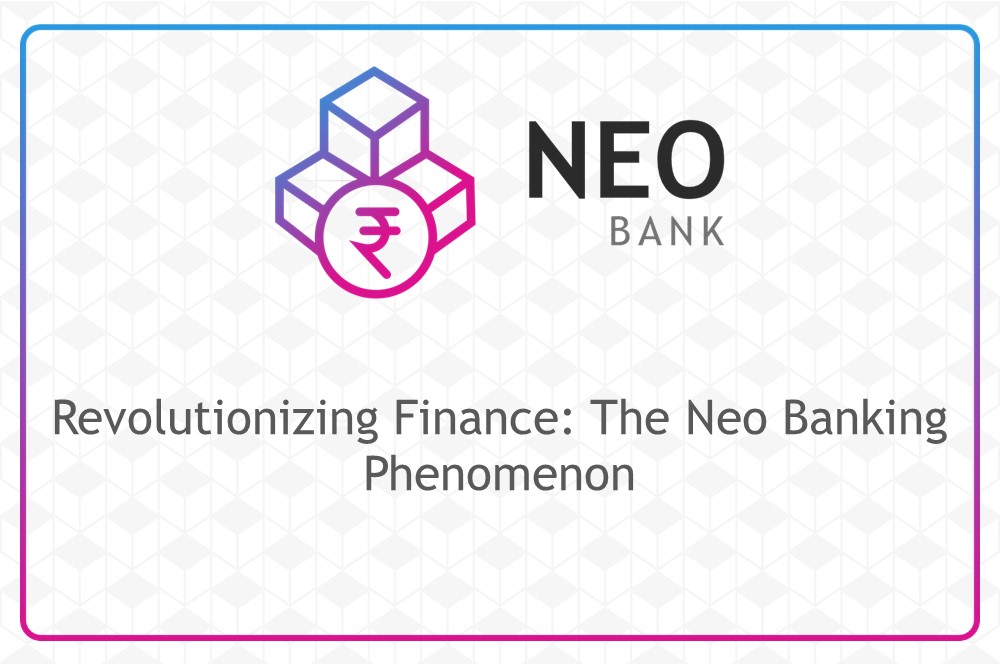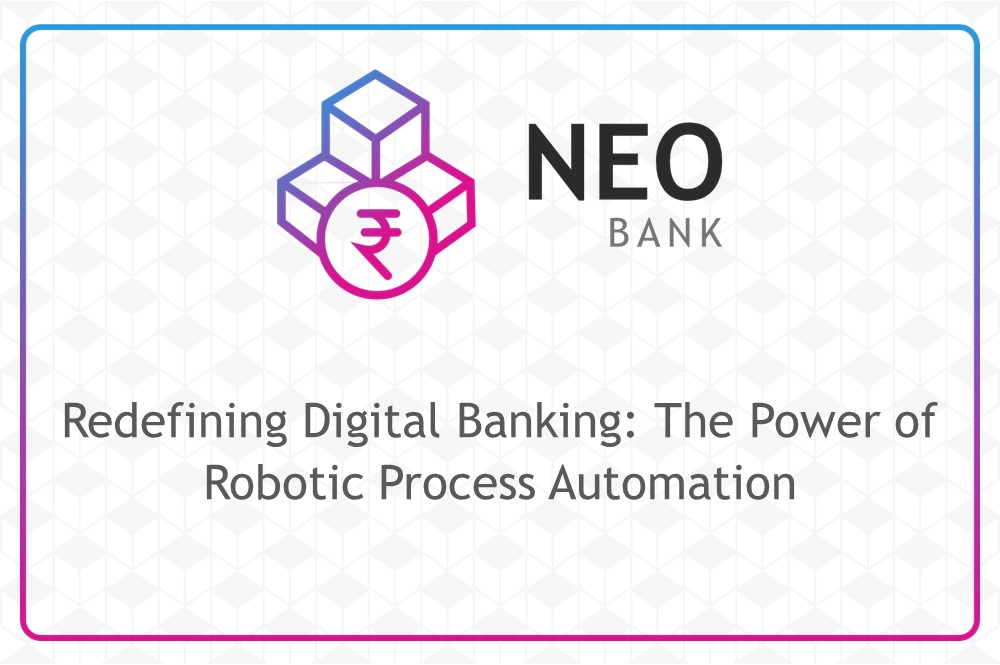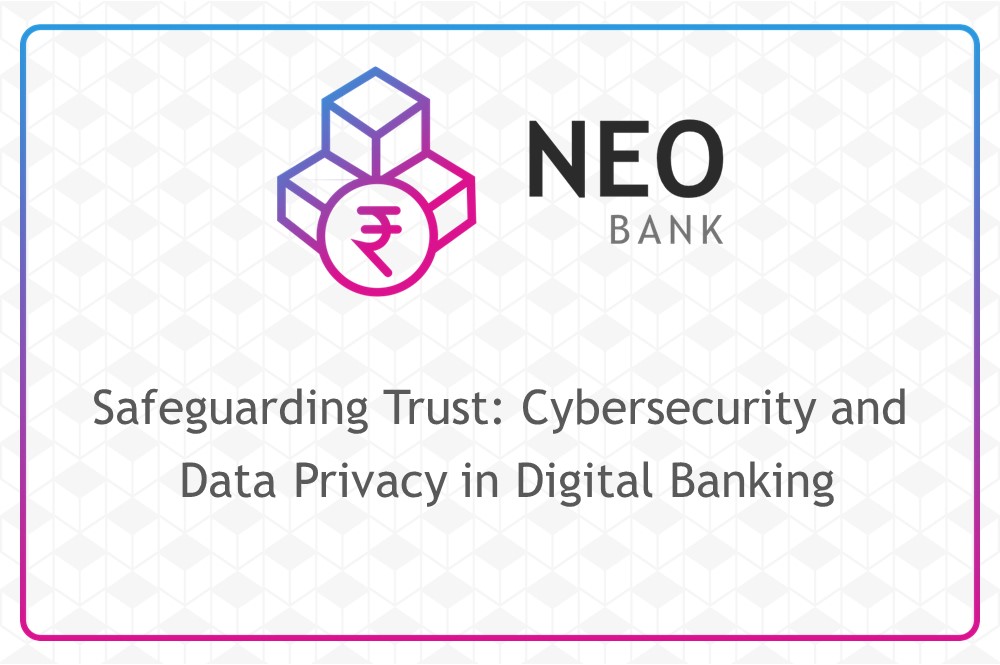Evolution of Digital Banking after COVID 19
Apr 11, 2022 - 13 MINS READ

Evolution of Digital Banking after COVID 19
Customers have grown even more reliant on the internet and mobile apps as a result of Coronavirus's required quarantines and social distancing policies, which are driving higher digital interactions. It's just a matter of time until enhanced services become a normal request for all financial services consumers. This will advance the open banking trend in the United States, despite the fact that, unlike in Europe and Canada, open banking legislation does not appear to be on the horizon in the foreseeable future. It is technically and logistically difficult to enforce APIs and data exchange for over 10,000 financial institutions using a broad-based standard.
Digital banking is driven by a fear of infection.
The Coronavirus has resulted in an increasing number of branch bank closures. Citigroup, located in New York City, temporarily closed 100 locations, while JP Morgan Chase, the country's largest bank, revealed intentions to eliminate around 1,000 branches. Customers will be able to visit those branches that are open during reduced hours.
As additional services, such as loan and mortgage requests and payments, become virtual and digital onboarding for new accounts becomes available as a result of COVID-19, an estimated one-third of banking consumers want to expand their usage of online and mobile banking services. Mobile payment applications are getting increasingly popular as individuals become more hesitant to use cash or credit cards. As the pandemic spreads, these estimates are expected to rise, especially if a second wave arises, resulting in a fresh round of restrictions and closures.
However, digital banking is more than just replacing services traditionally offered by branch banks. By leveraging common APIs to gather data from clients' accounts, open banking can fuel new creative digital services, giving banks a competitive advantage. Banks, for example, can accept payments from accounts housed elsewhere if they have access to a full picture of a customer's data.
- Digital personal advisers driven by machine learning-based apps can assess all savings and investment accounts, as well as the customer's personal objectives, to offer the best options.
- Based on advanced risk models and market offers, financial organizations may also utilize data given to determine the most appropriate service for a client, the most competitive service price, and the most favorable terms and conditions for investments, loans, and mortgages.
- Consider how simple it would be to persuade clients to switch to your bank by demonstrating how you can increase their revenues or decrease their costs.
These programs are also not confined to B2C transactions. Bank of America recently launched digital tools for small businesses that assist expedite transactions and creating cash-flow estimates, as well as simple access to financial experts for rapid counsel.
Aiming for a More Efficient System Architecture
The number of online transactions continues to rise as more consumers and organizations rely on digital apps for financial services, putting pressure on existing IT computing capabilities. The enormous rise in the number of requests is causing bottlenecks, which can decrease application performance and negatively impact customer service levels. Customers are more likely to switch if they have to wait too long to complete a transaction or acquire loan approval, or if they perceive that they may get better terms from another bank. As a result, banks must either scale up their costly legacy infrastructure to offer the desired user quality of experience or find contemporary solutions that can elastically grow to manage this data at the appropriate speeds while maintaining an optimum TCO.
Large financial services firms are frequently hampered by tangled and antiquated systems that are too difficult to handle, process, and analyze massive volumes of data from many sources. This was recently discovered in a BIAN study, in which more than 60% of respondents voiced worry that banks would struggle to open up their APIs due to the "present condition of banks' fundamental architecture.
There are, however, developments meant to assist banks in processing more data at a lower cost without the need to dismantle and replace old infrastructure. Some in-memory computing platforms, for example, can co-locate all data models (hierarchically organized, disorganized, and semi-structured), service business logic, and analytics in an in-memory information core and distribute them across a horizontally scalable architecture for extremely fast processing times while eliminating the need to invest in excess capacity.
These contemporary data and analytics platforms enable the agile creation and deployment of applications including interactive queries, analytics, and even machine learning that operate concurrently on changeable streaming, transactional. Applications can access data on external data lakes 100 times faster, whether they are on the cloud, on-premise, or hybrid, which not only speeds up queries and BI reporting. Vulnerability assessment, fraud prevention, loan clearances, dynamic pricing, and tailored services are just a few of the time-critical applications and decision-making services that are improved.
Digital Banking Will Be the New Standard
Digital banking will soon become the standard. To sustain their market leadership, financial services will need to adopt new technology to harness and monetize their data. The full potential of digital banking can only be achieved if a high-performance data management infrastructure is in place, allowing queries and analytics for time-critical applications to be done promptly and reliably at an optimum TCO. COVID-19 may have led to the closure of branches, but it can also hasten the adoption of open banking, bringing ease and innovative apps that will revolutionize the way clients bank.
As The New Normal, Digital Banking by coming years
It's undeniable that 2020 brought unforeseen changes and problems for banks, as more Americans were pushed to join the digital banking ecosystem—whether or not that had been a desire in the past.
While an increased emphasis on digital was already underway, the coronavirus epidemic hastened the process in ways that will continue to alter how you engage with your financial institutions in the next year.
The Covid-19 epidemic has hastened the shifting interaction between people and their banks or credit unions, from banks limiting branch access and hours to the worry of coronavirus contaminating paper banknotes and coins.
- Increasing Investments in Advanced Cybersecurity Tools
While the rise of digital banking among customers is not a new phenomenon, the huge growth in consumers' usage of mobile applications and websites for banking transactions in 2020 makes them a potential target for hackers. As a result, banks and credit unions are investing heavily in digital security to safeguard consumers' and proprietary information. Whereas the number of data breaches is expected to be lower in 2020 compared to the previous year, 1,506 different instances occurred in 2019 that resulted in customer data being stolen. Because banks or credit unions were involved in 61% of these instances, financial organizations’ cybersecurity infrastructure must be as strong as feasible. Bank of America, Fifth Third Bank, and U.S. Bank all had data breaches in 2020, resulting in consumer data being exposed.
With digital banking here to stay, cybersecurity is critical for consumer acquisition, retention, and happiness.
- Using Seamless Digital Tools to Build Long-Term Customer Relationships
In a year that had lots of downtime for many due to stay-at-home orders issued around the country, mixed in with the reality of rising financial insecurity experienced by millions, Americans were forced to take a deeper look at their financial situation. As a result, consumers quitting and switching banks is a predicted trend following the epidemic. Banks and credit unions have the problem of keeping people engaged in an age of digital banking and social alienation in an industry predicated on personal touch at branches. Providing outstanding tools, resources, and services as part of the customer experience is an important component of maintaining customers in this changing climate.
According to the survey, Americans have largely acclimated to – and are prepared for – a predominantly digital banking environment:
- Four out of every five clients prefer to manage their accounts online rather than in person.
- Approximately eight out of ten people use a smartphone and/or desktop/laptop to conduct banking tasks.
- The great majority of Chase (89 percent) and non-Chase (85 percent) consumers believe that handling their affairs digitally saves them time.
- Almost 70% of Chase customers and 60% of non-Chase customers think that they are absolutely or somewhat confident in the safety and security of making payments using digital applications or transferring money through provider apps.
- Only 10% of Chase customers and 14% of non-Chase customers agree that they do not generally handle their accounts online because technology overwhelms them.
- Managing In-Person and Online Banking
Digital resources and tools are currently and will continue to be a major priority for financial institutions in the foreseeable future. But, in this typically in-person profession, where does personal connection come into play?
Whether in person at a branch, online via a chatbot, or a mix of the two, the banking relationship—built on some type of devotion to a financial institution—isn't merely related to pursuing the greatest interest rate or sign-up bonus.
This vital relationship is interpersonal, founded in part on the belief that your financial assets are protected and that your requirements are addressed. Consumers may come to feel detached from their financial institution if the customer experience lacks a personal touch, perhaps leading to recurring customer service issues.
This Is What these Observations Imply for Consumers
The so-called 21/90 rule reflects the importance of making major, and eventually lasting, lifestyle changes, and is based on research that shows it takes 21 days to become a habit and 90 days to cement it as a permanent lifestyle change. During the Covid-19 epidemic, we greatly beyond these date marks, and now that we're approaching 2021, the financial sector isn't going back to how it was.
Prior to the epidemic, there was already a shift toward, and focus on, digital banking. However, as the world accepted the reality of protracted periods of social separation, stay-at-home orders, and everything that entails, digital banking became a requirement rather than a nicety. Since the beginning of the epidemic, mobile wallets and provider payment applications have experienced a substantial surge in users and engagement. And over three-quarters of Chase and non-Chase consumers think they will likely continue or start utilizing digital payment options even after the Covid-19 danger has passed.
Banks, both conventional brick-and-mortar and online-focused, will compete for digital dominance now that consumers have broadly adopted digital platforms. Discussions regarding interactive teller machines, hybrid loan application procedures, and expanded digital assistance and self-service at Informa Financial Intelligence's FBX 2021 Banking Outlook roundtable revealed the next generation of financial innovation as the future of digital banking takes shape.
The shift to online banking is already a reality, and it looks that there will be no going back, notwithstanding a slower ramp-up of changes to bank branches and efforts toward a cashless society.
EndNote
As a consequence of the Coronavirus, a growing proportion of branches bank closures have occurred. One-third of banking consumers want to use online and mobile services more frequently. Open banking may drive the development of innovative digital services, providing banks with a competitive advantage. Bank of America has developed digital solutions for small businesses to help with transaction speed and cash-flow forecasting.
Customers are more inclined to transfer banks if they are forced to wait too long to complete a transaction or obtain loan approval, or if they believe they can receive better conditions elsewhere. To capture and commercialize their data, financial services will need to adopt new technologies. In 2019, 1,506 separate incidents resulted in user data being compromised. To protect consumers' and proprietary information, banks and credit unions are spending extensively in digital security. In 2020, the number of data breaches is projected to decrease.
